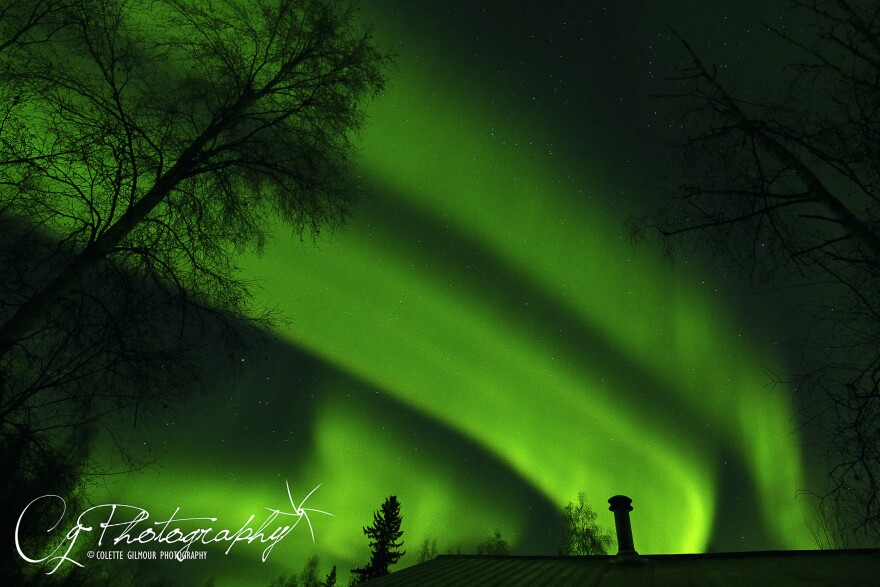Sunday night was clear on the Kenai, perfect conditions for viewing the aurora borealis. A spectacular green and purple display was visible across the state from 7 p.m. Sunday to 6 a.m. Monday.
For local photographers, this weekend’s Northern Lights were also an opportunity to get out their cameras and capture the quintessential Alaska image.
Colette Gilmour is the founder of Kenai Camera and Coffee, a local photography collective. She said this weekend, the group came alive.
“When you get into February, our mindsets kind of get harder to go outside, motivation goes way down,” she said. “So when the aurora came out, it kind of brought us all back up, and we all shared in that experience.”
Gilmour said whether they just took photos with phone cameras from their back porches, or headed out to prime locations with all sorts of equipment, members from across the group found the night to be really special.
“They’re all great in their own unique way,” she said.
Gilmour’s first piece of advice for local amateur photographers looking to capture the aurora is to be dressed for the weather and prepare to be out in the cold for a while.
Scott Moon, a professional photographer based in Kenai, said he saw the Northern Lights for the first time as a teenager, and has had his eye on the sky ever since. He said the best spot in town for aurora viewing is on Marathon Road in Kenai, or any backroad just outside Kenai or Soldotna. And he said the most important consideration is getting away from any city lights, which will make it harder for both the human eye and camera to get a good picture.
Moon also suggests having something in the foreground, like trees, mountains or buildings, to keep the photos interesting — although he warns power lines can ruin a picture. And he said once you’re out, you can never take too many pictures, because the lights are always moving and changing.
Moon and Gilmour both suggested using a tripod to keep the camera steady and avoid blurry photos, because the shutter usually needs to stay open for a few seconds.
“A tripod definitely helps your camera or your phone stay still. And that’s what’s gonna help get you the sharpness with the long exposures,” she said.
On the more technical side, Gilmour recommended setting the camera’s ISO — or light sensitivity — to 1600, setting the shutter speed between 10 and 15 seconds, and setting the aperture to a minimum of 2.8.
And for phone photographers, Gilmour said there are great apps designed to help shoot the aurora, and recommends downloading one to take the guesswork out of the process.
But Gilmour also said sometimes, experiencing the aurora with your own eyes is the best way to do it.
“You don’t want to lose yourself in trying to get all your technology out and get a picture and lose what mother nature’s giving you, not to be corny,” she said. “You wanna just enjoy it and have fun.”
Cloudy conditions for the next couple days will probably prevent aurora viewing.



